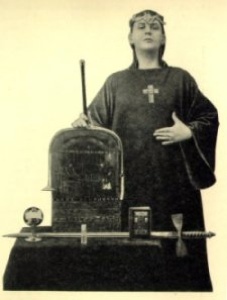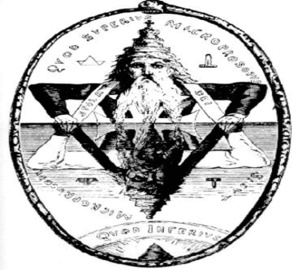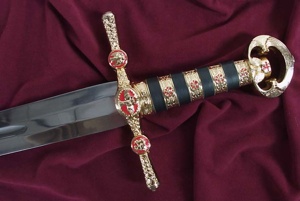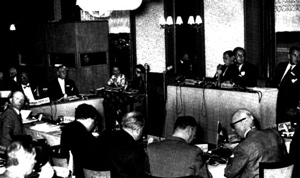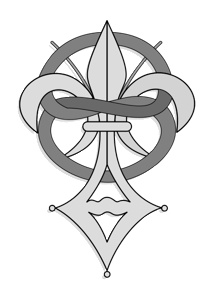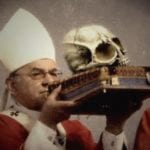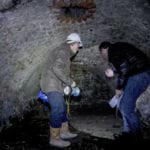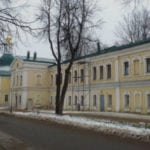 Movies and TV
Movies and TV  Movies and TV
Movies and TV  Health
Health 10 Miraculous Advances Toward Curing Incurable Diseases
 Miscellaneous
Miscellaneous 10 Undeniable Signs That People’s Views of Mushrooms Are Changing
 Animals
Animals 10 Strange Attempts to Smuggle Animals
 Travel
Travel 10 Natural Rock Formations That Will Make You Do a Double Take
 Movies and TV
Movies and TV 10 Actors Hidden in Your Favorite Movies
 Our World
Our World 10 Science Facts That Will Change How You Look at the World
 Pop Culture
Pop Culture 10 Incredible Female Comic Book Artists
 Crime
Crime 10 Terrifying Serial Killers from Centuries Ago
 Technology
Technology 10 Hilariously Over-Engineered Solutions to Simple Problems
 Movies and TV
Movies and TV 10 Movie Adaptions That Brought Popular Songs to Life
 Health
Health 10 Miraculous Advances Toward Curing Incurable Diseases
 Miscellaneous
Miscellaneous 10 Undeniable Signs That People’s Views of Mushrooms Are Changing
Who's Behind Listverse?

Jamie Frater
Head Editor
Jamie founded Listverse due to an insatiable desire to share fascinating, obscure, and bizarre facts. He has been a guest speaker on numerous national radio and television stations and is a five time published author.
More About Us Animals
Animals 10 Strange Attempts to Smuggle Animals
 Travel
Travel 10 Natural Rock Formations That Will Make You Do a Double Take
 Movies and TV
Movies and TV 10 Actors Hidden in Your Favorite Movies
 Our World
Our World 10 Science Facts That Will Change How You Look at the World
 Pop Culture
Pop Culture 10 Incredible Female Comic Book Artists
 Crime
Crime 10 Terrifying Serial Killers from Centuries Ago
 Technology
Technology 10 Hilariously Over-Engineered Solutions to Simple Problems
Top 10 Secret Societies
Through history there have been many secret societies and conspiracy theories about those societies. This is a list of 10 of the most famous and popular secret societies or alleged secret societies.
SEE ALSO: Top 10 Scandalous Freemason Secrets
1. Skull and Bones [Wikipedia]
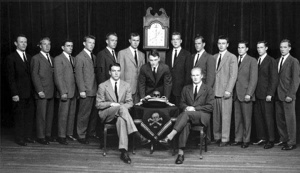
Members of the Skull and Bones (George Bush is left of the clock) [1947]
The Order of Skull and Bones, a Yale University society, was originally known as the Brotherhood of Death. It is one of the oldest student secret societies in the United States. It was founded in 1832 and membership is open to an elite few. The society uses masonic inspired rituals to this day. Members meet every Thursday and Sunday of each week in a building they call the “Tomb”.
According to Judy Schiff, Chief Archivist at the Yale University Library, the names of the members were not kept secret until the 1970s, but the rituals always have been. Both of the Bush presidents were members of the society while studying at Yale, and a number of other members have gone on to great fame and fortune.
The society is surrounded by conspiracy theories; the most popular of which is probably the idea that the CIA was built on members from the group. The CIA released a statement in 2007 (coinciding with the popularity of the film The Good Shepherd) in which it denied that the group was an incubator for the CIA. You can read that document here.
Espionage, drug smuggling, and elitism—Yale’s secret society has it all. Find out more with Fleshing Out Skull & Bones: Investigations into America’s Most Powerful Secret Society at Amazon.com!
2. Freemasons [Wikipedia]
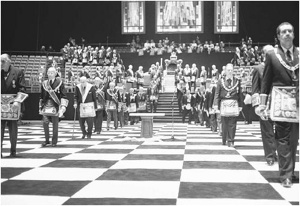
Freemasons Annual Meeting [1992]
The Grand Masonic Lodge was created in 1717 when four small groups of lodges joined together. Membership levels were initially first and second degree, but in the 1750s this was expanded to create the third degree which caused a split in the group. When a person reaches the third degree, they are called a Master Mason.
Masons conduct their regular meetings in a ritualized style. This includes many references to architectural symbols such as the compass and square. They refer to God as “The Great Architect of the Universe”. The three degrees of Masonry are: 1: Entered Apprentice, this makes you a basic member of the group. 2: Fellow Craft, this is an intermediate degree in which you are meant to develop further knowledge of Masonry. 3: Master Mason, this degree is necessary for participating in most masonic activities. Some rites (such as the Scottish rite) list up to 33 degrees of membership.
Masons use signs and handshakes to gain admission to their meetings, as well as to identify themselves to other people who may be Masons. The signs and handshakes often differ from one jurisdiction to another and are often changed or updated. This protects the group from people finding out how to gain admission under false pretenses. Masons also wear stylized clothing based upon the clothing worn by stone masons from the middle ages. The most well known of these is the apron.
In order to become a Mason, you must generally be recommended by a current mason. In some cases you must be recommended three times before you can join. You have to be at least 18 years old and of sound mind. Many religions frown upon membership of the Masons, and the Roman Catholic Church forbids Catholics to join under pain of excommunication.
3. Rosicrucians [Wikipedia]
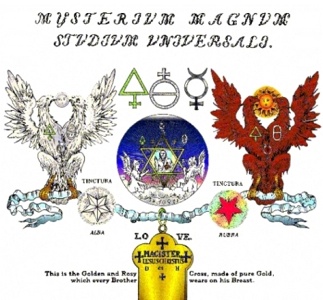
Secret Symbols of the Rosicrucians
The Rosicrucian order is generally believed to have been the idea of a group of German protestants in the 1600s when a series of three documents were published: Fama Fraternitatis Rosae Crucis, Confessio Fraternitatis, and The Chymical Wedding of Christian Rosenkreutz anno 1459. The documents were so widely read and influential, that the historian Frances Yeats refers to the 17th century as the Rosicrucian Enlightenment. The first document tells the story of a mysterious alchemist (Christian Rosenkreuz) who travelled to various parts of the world gathering secret knowledge. The second document tells of a secret brotherhood of alchemists who were preparing to change the political and intellectual face of Europe. The third document describes the invitation of Christian Rosenkreuz to attend and assist at the “Chemical” wedding of a King and Queen in a castle of Miracles.
Current members of the Rosicrucian Order claim that its origins are far more ancient than these documents. The authors of the documents seemed to strongly favor Lutheranism and include condemnations of the Catholic Church. Rosicrucianism probably had an influence on Masonry and, in fact, the 18th degree of Scottish Rite Masonry is called the Knight of the Rose Croix (red cross).
There are a large number of Rosicrucian groups today – each claiming to be closely tied to the original. Of the two main divisions, one is a mix of Christianity with Rosicrucian principles, and the other is semi-Masonic. The Masonic type tend to also have degrees of membership.
4. Ordo Templis Orientis [Wikipedia]
The OTO (Order of the Temples of the East) is an organization that was originally modeled on Masonry but, under the leadership of the self-styled “Great Beast” Aleister Crowley, it took on the principles of his religious system called Thelema. Thelema is based around a single law: “Do what thou wilt shall be the whole of the law, love is the law, love under the will” [1904]. Membership is based upon degrees of initiation and highly stylized rituals are used. The OTO currently claims over 3,000 members worldwide.
Crowley created a “Mass” for the OTO which is called the Gnostic Mass. Of the “Mass”, Crowley wrote:
“I resolved that my Ritual should celebrate the sublimity of the operation of universal forces without introducing disputable metaphysical theories. I would neither make nor imply any statement about nature which would not be endorsed by the most materialistic man of science. On the surface this may sound difficult; but in practice I found it perfectly simple to combine the most rigidly rational conceptions of phenomena with the most exalted and enthusiastic celebration of their sublimity.”
The ritual is very stylized and uses virgin priestesses, children, and priests. Many Ancient Egyptian God’s are invoked, as well as the Devil, and at one point the priestess performs a naked ritual.
5. Hermetic Order of The Golden Dawn [Wikipedia]
The order of the Golden Dawn was created by Dr. William Robert Woodman, William Wynn Westcott, and Samuel Liddell MacGregor Mathers. All three were Freemasons and members of Societas Rosicruciana in Anglia (an organization with ties to Masonry). It is considered by many to be a forerunner of the Ordo Templi Orientis and a majority of modern Occult groups.
The belief system of the Golden Dawn is largely taken from Christian mysticism, Qabalah, Hermeticism, the religion of Ancient Egypt, Freemasonry, Alchemy, Theosophy, Magic, and Renaissance writings. William Yeats, and Aleister Crowly are two of the more famous members of the group.
The fundamental documents of the order are known as the Cipher Documents. These were translated into English using a cipher attributed to Johannes Trithemius. The documents are a series of 60 folios containing magic rituals. The basic structure of many of these rituals appear to originate with Rosicrucianism. There is a great deal of controversy surrounding the origins of these documents.
6. The Knights Templar [Wikipedia]
The Knights Templar (full name: The United Religious, Military and Masonic Orders of the Temple and of St John of Jerusalem, Palestine, Rhodes and Malta) is a modern off-shoot of Masonry and does not have a direct tie to the original Knights Templar – a religious military group formed in the 12th century. Members of the Masonic Knights Templar do not claim a direct connection to the medieval group, but merely a borrowing of ideas and symbols.
In order to become a member of this group, you must already be a Christian Master Mason. This organization is a distinct one, and is not just a higher degree of Masonry. Despite Freemasonry’s general disclaimer that no one Masonic organization claims a direct heritage to the medieval Knights Templar, certain degrees and orders are obviously patterned after the medieval Order. These are best described as “commemorative orders” or degrees. Nevertheless, in spite of the fraternity’s official disclaimers, some Masons, non-Masons, and even anti-Masons insist that certain Masonic rites or degrees originally had direct Templar influence.
7. The Illuminati [Wikipedia]
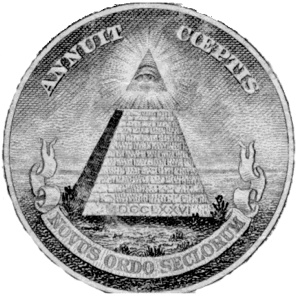
The Pyramid, an illuminati symbol
A movement of freethinkers that were the most radical offshoot of The Enlightenment — whose followers were given the name Illuminati (but who called themselves “Perfectibilists”) — was founded on May 1, 1776 in Ingolstadt (Upper Bavaria), by Jesuit-taught Adam Weishaupt. This group is now known as the Bavarian Illuminati. While it was not legally allowed to operate, many influential intellectuals and progressive politicians counted themselves as members. Even though there were some known Freemasons in the membership, it was not considered to be endorsed by Masonry. The fact that the Illuminati did not require a belief in a supreme being made them particularly popular amongst atheists. This, and the fact that most members were humanists, is the reason for the widespread belief that the Illuminati wants to overthrow organized religion.
Internal panic over the succession of a new leader, and government attempts to outlaw the group saw to it collapsing entirely in the late 1700s. Despite this, conspiracy theorists such as David Icke and Was Penre, have argued that the Bavarian Illuminati survived, possibly to this day, though very little reliable evidence can be found to support the idea that Weishaupt’s group survived into the 19th century. It has even been suggested that the Skull and Bones club is an American branch of the Illuminati.
Many people believe that the Illuminati is still operating and managing the main actions of the governments of the world. It is believed that they wish to create a One World Government based on humanist and atheist principles.
Is it all a myth? Is the Illuminati real? Are they watching you? Find out in The Illuminati: Facts & Fiction at Amazon.com!
8. The Bilderberg Group [Wikipedia]
This group is slightly different from the others in that it does not have an official membership. It is the name given to a group of highly influential people who meet ever year in secrecy (and usually with strong military and government sponsored security). The topics discussed are kept secret. The structure of the meetings is that of a conference – usually held in five star hotels around the world. Attendance at the meeting is strictly by invitation only. The first meeting took place in 1954 at the Hotel Bilderberg in the Netherlands.
The original meeting was initiated by several people. Polish emigre and political adviser, Joseph Retinger, concerned about the growth of anti-Americanism in Western Europe, proposed an international conference at which leaders from European countries and the United States would be brought together with the aim of promoting understanding between the cultures of The United States of America and Western Europe.
Although the agenda and list of participants are openly available to the public, it is not clear that such details are disclosed by the group itself. Also, the contents of the meetings are kept secret and attendees pledge not to divulge what was discussed. The group’s stated justification for secrecy is that it enables people to speak freely without the need to carefully consider how every word might be interpreted by the mass media.
Needless to say, this group is constantly surrounded by controversy and conspiracy theories.
9. The Priory of Sion [Wikipedia]
After the publication of the Da Vinci Code by Dan Brown, a great deal of interest in the Priory of Sion has been created. Unfortunately for those hoping to find and join the Priory, it is, in fact, fictional. It was a hoax created in 1956 by a pretender to the French Throne, Pierre Plantard. Letters in existence dating from the 1960s written by Plantard, de Cherisey and de Sède to each other confirm that the three were engaging in an out-and-out confidence trick, describing schemes on how to combat criticisms of their various allegations and how they would make up new allegations to try to keep the whole thing going. Despite this, many people still continue to believe that the Priory exists and functions to this day.
The authors of the well known book, The Holy Blood and the Holy Grail, misled by the hoax, stated:
1. The Priory of Sion has a long history starting in AD 1099, and had illustrious Grand Masters including Isaac Newton and Leonardo da Vinci.
2. The order protects certain royal claimants because they believe them to be the literal descendants of Jesus and his alleged wife Mary Magdalene or, at the very least, of king David.
3. The priory seeks the founding of a “Holy European Empire” that would become the next hyperpower and usher in a new world order of peace and prosperity.
10. Opus Dei [Wikipedia]
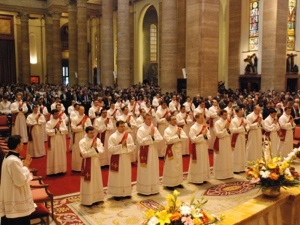
Ordination of Opus Dei Priests
Opus Dei is an organization of the Catholic Church that emphasizes the Catholic belief that everyone is called to holiness and that ordinary life is a path to sanctity. The celibate numeraries and numerary assistants live in special centers, while associates are celibate members living in their private homes. The order was founded in Spain in 1928 by Roman Catholic priest Josemaría Escrivá with the approval of Pope Pius XII.
When Dan Brown’s Da Vinci Code was published, it claimed that Opus Dei was a secret organization within the Church whose aim was to defeat the Priory of Sion and those who seek to uncover the “truth” about Christianity and the alleged royal bloodline of Christ. Outside of the book, there has been a great deal of controversy over Opus Dei because of the strictness of its religious structure.
The Catholic Church forbids secret societies and membership in them, and Opus Dei investigators have frequently debunked claims that this organization is acting in secrecy to further a sinister agenda.
Technorati Tags: secret
